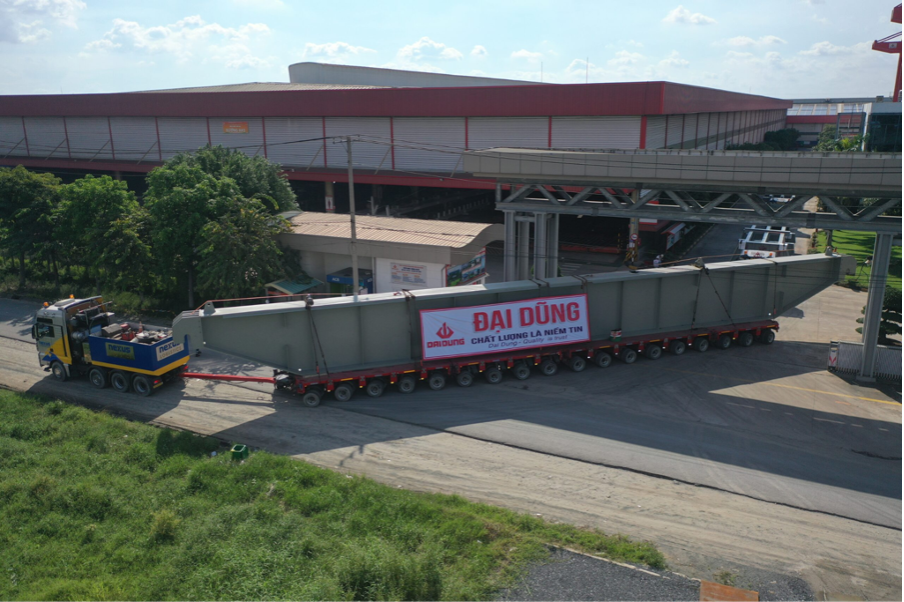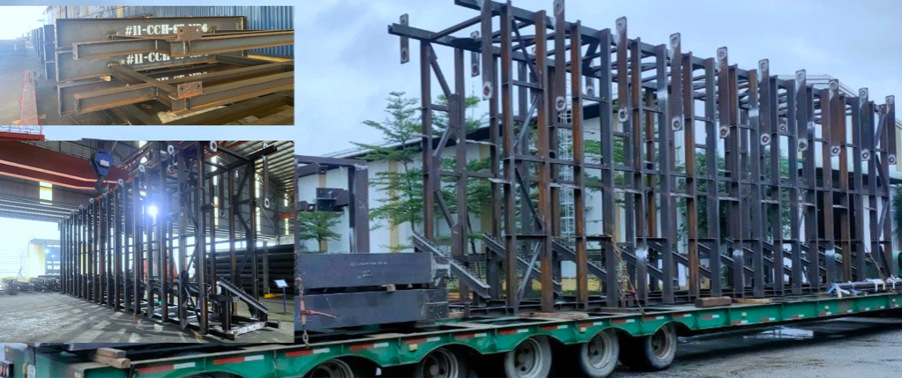As the maritime economy becomes an increasingly vital growth driver for many nations, maritime constructions serve as the foundational infrastructure — supporting not only economic development but also national security and sovereignty.
Together with DaiDung Group, let’s explore what maritime constructions are, their classifications, challenges, and DaiDung Group remarkable achievements in this dynamic sector.

What Is a Maritime Construction and Why Does It Matter?
Maritime constructions are infrastructure projects developed or installed within port and coastal areas to enable effective utilization of marine resources. These works play a crucial role in boosting the maritime economy, protecting the environment, and ensuring national security and sovereignty.
They include ports, wharves, offshore oil and gas platforms, offshore wind farms, buoys, navigation channels, marine signal systems, breakwaters, groynes, and coastal protection embankments.
In essence, maritime constructions are not limited to physical structures on or near the sea but encompass a complete system of infrastructure and equipment ensuring safe, sustainable, and lawful maritime operations under Vietnamese regulations.
Main Categories of Maritime Constructions
In Vietnam and worldwide, maritime constructions are typically divided into several key categories — each serving specific socioeconomic purposes:
- Offshore Oil and Gas Structures:
Including drilling rigs, mooring systems, offshore foundations, and floating storage units. - Ports, Harbors, and Marine Logistics Facilities:
Critical infrastructure for transportation and trade, consisting of berths, docks, and logistics hubs. - Offshore Wind Power Projects:
Featuring monopile foundations and large steel turbine towers installed at sea, supporting renewable energy expansion. - Land Reclamation and Coastal Urban Projects:
Breakwaters, artificial islands, and coastal urban expansions that extend usable land area. - Other Marine Infrastructure:
Such as sea-crossing bridges, underwater tunnels, pipelines, drainage systems, and coastal protection works.
Key Challenges in Maritime Construction
Building at sea comes with distinctive technical and environmental challenges:
- Specialized Technical Standards:
Materials must resist corrosion and structural fatigue caused by strong winds, waves, and currents. - Harsh Environmental Conditions:
Construction and maintenance face risks from storms, tidal erosion, sea-level rise, and even melting ice effects. - Complex Construction Technology:
Offshore assembly, heavy-lift transport, and installation of ultra-large modules demand precision engineering and specialized expertise.
Notable Maritime Construction Projects in Vietnam
Vietnam has achieved significant progress in maritime infrastructure through several landmark projects:
- Can Gio Sea Reclamation Urban Area – Vinhomes Green Paradise (Ho Chi Minh City):
Covering nearly 2,870 ha, this is Vietnam’s largest sea reclamation project, designed to accommodate 230,000 residents and attract 9 million visitors annually.

- Tam Dao 03 Jack-Up Rig:
Built by PV Shipyard, it is Vietnam’s largest self-elevating drilling rig, showcasing the nation’s offshore industrial capacity. - Bien Dong 01 Project:
The Hai Thach – Moc Tinh gas field complex, weighing over 60,000 tons with an investment exceeding USD 1 billion, is a key energy security asset designed and operated by Vietnamese engineers. - Lach Huyen Deep-Sea Port (Hai Phong):
Northern Vietnam’s most advanced deep-water port, capable of receiving 18,000 TEU container ships, strengthening regional logistics networks. - Offshore Wind Power Projects in Binh Thuan and Ben Tre:
Under Vietnam’s Power Development Plan VIII, targeting 6,000 MW by 2030 and 17,500 MW by 2035, with initial projects expected by late 2025.
DaiDung Group Contribution to Maritime and Offshore Projects
DaiDung Group is a leading Vietnamese enterprise specializing in the fabrication of heavy structural steel and offshore construction components. The company’s capabilities meet stringent international technical standards, positioning it as a trusted partner in global supply chains for industrial, maritime, and renewable energy projects.
Highlighted Projects:
Greater Changhua Offshore Wind Farm (Taiwan):
DaiDung Group supplied massive components such as Suction Buckets (14m diameter, 16m height, 350 tons each) and Lids (14m diameter, 107 tons each), totaling over 8,000 tons.
The project provides clean energy to 1 million households and reduces 830,000 tons of CO₂ annually.
Shiplift Platform Project (BAE Systems – USA):
In collaboration with defense contractor BAE Systems, Dai Dung delivered one of the world’s largest ship-lifting platforms, measuring 150m in length and 34m in width, with a total weight of 8,000 tons — meeting the most demanding international defense standards.

Fehmarn Belt Fixed Link (Germany–Denmark):
As part of Europe’s largest underwater tunnel project, Dai Dung supplied structural steel components, marking its expansion into the European infrastructure market.

Shipping Frame Project (GE Global):
DaiDung Group manufactured industrial transport frames for GE’s offshore projects in Taiwan, contributing to global renewable energy logistics chains.

EACOP – East African Crude Oil Pipeline:
Extending its reach to Africa, Dai Dung supplied steel structures for this major cross-border oil pipeline project — a strategic energy development in the region.

Conclusion: The Future of Maritime Construction
Maritime construction remains an indispensable part of national economic development and sovereignty protection strategies. The future of this sector lies in green technologies, offshore renewable energy, and sustainable marine infrastructure.
With its advanced manufacturing capacity and commitment to innovation, DaiDung Group continues to be a pioneering force aiming not only to lead the domestic market but also to become a globally recognized name in maritime and offshore engineering.
